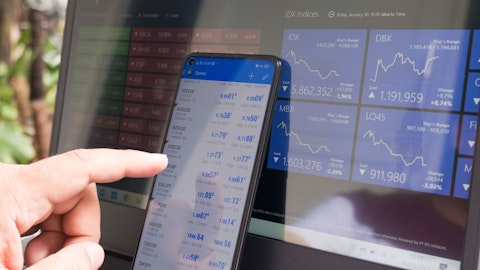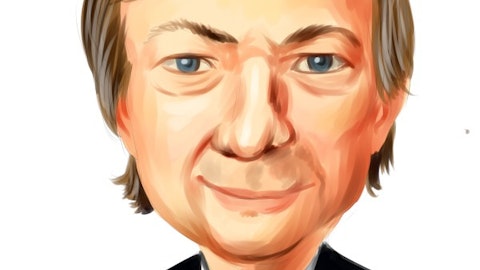But while leaving the company flexibility to continue to do the right thing and capture opportunities going forward with sufficient buffer. So that’s, I think, the grounding or the ranging on this. In terms of funding cost, we did see funding costs over the last 12 months continue to come down. There’s been 2 drivers of that. One has been the overall lower rate environment. The second, though, has been the change in the mix of our new business between guarantee and consumer finance. Consumer finance able to tap the interbank market, multiple funding sources has a lower net funding cost than the facilitation model by working with banks and trust companies. So, as we continue to see the mix change so that there is a greater proportion of consumer finance, even though we don’t think the rate environment will necessarily drop that much in the foreseeable future, we do think that our mix change will continue to optimize slightly the overall cost of funds in the model.
Operator: Your next question comes from Yada Li with CICC.
Yada Li: This is Yada with CICC. And my first question is by 4Q ’23, the company has completed the transition into 100% guarantee model, but the bottom line was still under pressure. And I was wondering what are the main causes and how long does it take before profits could be released? And what are the main drivers for the profitability recovery? And secondly, for the consumer finance company, how was the profitability and the future development, how we could balance the growth of the SBO and consumer finance segments and which one could be the strategic focus. And lastly, I was wondering, are we considering additional buybacks? And what is the main cost that we choose the special dividend instead of buying back?
Yong Cho: Let me pick up your first question. This is YS speaking. Because of our decline in new loan volume and the revenue we generate from new book cannot offset the decrease caused by all the group shrinkage. And on the 100% guarantee model — new model, you know that we have to accrue a lot higher, a lot higher off-loan provision that delay the public account of our new business. But on a single account basis, new loans that we enable on the 100% guarantee model is delivering lifetime profitability, but adjust record net accounting loss for the first calendar year because of the higher account provision. So that’s original delaying public [indiscernible]. And if I explain about what are the main drivers for profitability recovering.
How can you understand this ahead? I would say 3 things, right? The first is actually the portfolio credit performance, which we can measure by net flow rate. And the second is optimization, further optimization of what Greg mentioned, operating costs and also importantly, funding costs. And then lastly, our pace of new sales loan growth. We decided 3 factors will make — mostly decide our profitability recovery in coming years. And then if I was to answer your — the last question, it was about why special dividends over buybacks, have you considered buyback. If you compare dividend versus buyback, we believe considering the situation we are in, dividend has several more advantages. First, our ability to deliver return to shareholders through buyback is quite limited because of low liquidity.
The second as a dual primarily listed company in U.S. and also in Hong Kong, we do maintain a list, 25% public float by Hong Kong listing rules. And our current public float is only less than 32% now. So we have very, very limited space for buyback at this moment. And this time, our dividend that it comes with an option to choose cash or scrip. So we believe this provides more flexibility than buyback to our shareholders. So that’s the reason why we decided to provide special dividends over buybacks. And then one more question.
Gregory Gibb: Yes. Greg here. On consumer finance, basically, 2023 was the third kind of full year of operation for the company and it has been scaling up from scratch when the license was acquired. So, 2023 is a profitable year for consumer finance. As the scale of that business continues to increase, it’s relative efficiency, there’s still some room there as it continues to scale up and we change the overall mix of the portfolio. The question of how do we balance this and what is our main strategic focus going forward. So, I think the way for us to describe this is our main strategic focus, our differentiation in the market remains around serving the small business owner. This is still our core element. Where we see consumer finance playing an important role is really in 2 ways.




